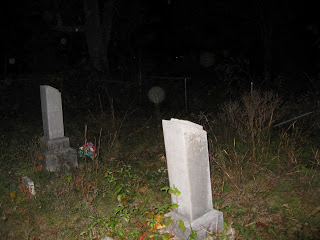When reviewing evidence post-investigation, staring at photographs and listening to hours of audio can play tricks with your mind. It’s totally normal. But understanding and recognizing these tendencies of the human subconscious is essential in order to avoid mistakenly classifying examples of matrixing or pareidolia as evidence.
Our minds naturally seek patterns in our surroundings and in external stimuli. From the time we are small children, we look for familiarity and try to find order amidst what otherwise seems to be chaos. Our seeking of communication and making sense of the environment can be manifested in a natural psychological phenomenon called apophenia. More specifically, pareidolia occurs when an image can be perceived and interpreted as having meaning or significance, while anthropomorphizing is a similar term for perceiving human forms or attributes to non-human things or images.
According to Martinez-Conde (2012), “our aptitude to identify structure and order around us, combined with our superior talent for face detection, can lead to spectacular cases of pareidolia, with significant effects in society.” Prime examples of this have made their way into our culture, including seeing faces in celestial objects like the moon, identifying familiar shapes in clouds or medical imaging, or even spotting religious figures in toast.
Even Google has recently been utilized to further look into pareidolia. A German design firm has begun scanning the globe utilizing satellite imagery provided by Google maps (Dickey, 2013) in hopes of finding familiar images. This process has been slow-going at best, only scanning about 5% of the Earth’s surface thus far, but has been able to identify some examples of the phenomenon in images of our planet’s terrain.
The term “matrixing” has come into vogue and common use among some in the paranormal field as another word for pareidolia, but there is some debate as to whether these two terms are really interchangeable. While the difference is subtle, there is some consensus that pareidolia refers more to illusions that may be misperceived within untouched audio or photos, while matrixing refers to perceiving familiar shapes within media that has been enlarged, compressed to the point of diminishing quality, or otherwise distorted.
When evaluating evidence, a critical eye is your best defense against mistaking instances of pareidolia or matrixing as ghostly evidence. Drowsiness, darkness, and peripheral vision can multiply the effects of pareidolia, so ensuring that you are focused, rested, and in good lighting may help you scrutinize potential evidence more effectively. Refraining from enlarging or compressing evidence is helpful as well. If you find an image that you feel may be paranormal, but could also be a case of pareidolia or matrixing, keep in mind that an honest, critical analysis is key. It’s better for you and your team to constructively question and debunk your evidence than waiting for others to do so. When in doubt, go back to the location where the evidence was gathered (always seek permission first, of course!) and see if you can recreate or debunk the image. By carefully examining your own photos and audio, you can help ensure that your evidence stands up.
References
Dickey, C. (2013, June 5). Virgin Mary grilled cheese? Newsweek Global, 161(21).
Martinez-Conde, S. (2012). A Faithful Resemblance. Scientific American Mind, 19.
Originally published here
